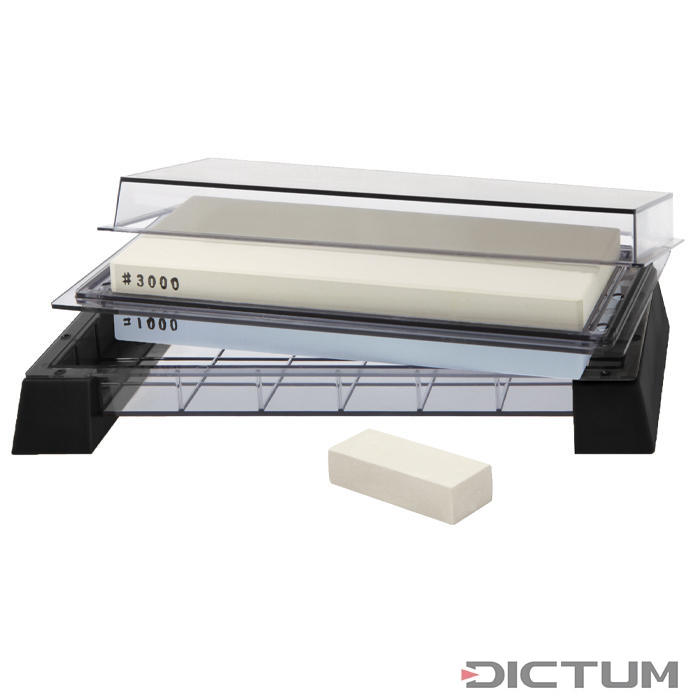I’m a total noob in regards to freehand sharpening but I got me some cheap and I guess inconsistent stones a while ago. Today my cardboard slayer - a cheap Mora Robust Carbon - gave out so I want to give them a try.
That and my two clumsy mitts is what I have available:

I guess I don’t need the 2k/6k anytime soon but shall I start as low as 400? Currently the Mora can’t cleanly cut paper anymore.
I know I have to sharpen the the full bevel with a Scandi but how shall I prepare the stone? Watering (how long if?) or just wetting it? How much pressure, edge leading? Is 1k enough or do I have to use something else after that?
Any pointers would be welcome
That and my two clumsy mitts is what I have available:
I guess I don’t need the 2k/6k anytime soon but shall I start as low as 400? Currently the Mora can’t cleanly cut paper anymore.
I know I have to sharpen the the full bevel with a Scandi but how shall I prepare the stone? Watering (how long if?) or just wetting it? How much pressure, edge leading? Is 1k enough or do I have to use something else after that?
Any pointers would be welcome


